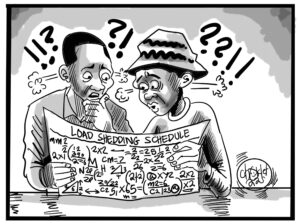ECONOMIST Trevor Hambayi says despite the continued drop in the inflation rate, prices of goods and services are only expected to reduce once there is stability in the exchange rate.
According to the Bank of Zambia, the Dollar was buying at K17.9 and selling at K18.00 as at 12:30 hours on Monday.
In an interview, Hambayi said the market could only reduce prices of goods and services once they saw stability in the exchange rate.
“Normally from an economic perspective, what you do find is that yes the inflation rate has been dropping but the commodity pricing, the price for goods and services has not been dropping. The reason this is so is that the market is waiting to see a stability in the exchange rate. That is the only time they can reduce the prices otherwise we would also start seeing fluctuations in prices dropping and going up. Also, the business sector wants to be able to appreciate this, that they are making slightly a bit more profit now because of this depreciation of the Kwacha,” he said.
“As soon as we see stability in the exchange rate, you will see the price either become stable or actually drop. A couple of things that need to happen for this price stability to be (reflected) in the exchange rate; first one is obviously that we need the agreement with the IMF which will ensure that we restructure our debt and being able to show to the international investors where we are going to find the resources, we pay this debt. The third one is having to put liquidity in the markets so that we can start to grow the economy. All these things must come into play before we can actually see the continued depreciation of the inflation rate, but also secondly we also want to see a reduction in the price of goods and services.”
Hambayi said the fluctuation of the Kwacha was caused by the demand for Dollars in the country.
“Firstly you must appreciate where the currency appreciation for the Kwacha came from. The currency appreciation came from the goodwill that was coming from international perception, the sentiments were very positive about what direction the country was going. All the appreciation that you saw in the Kwacha was on I think three major factors, firstly is the SDR that we had received $1.3 billion which increased our reserves. Secondly, is obviously the positive aspect in terms of what government is going to do in restoring the rule of law and bringing in the policies that were going to be attractive for investor confidence. Which is why we saw the international community wanting to invest an additional $2 billion into the mining sector,” said Hambayi.
“The third [aspect] was obviously that recently we had the IMF staff-level agreement which speaks to the fact that the IMF is going to support us. These are the key aspects that were driving the positive appreciation of the currency. What has happened now obviously is the fact that we have gone back to the economic parameters that are governing the law of supply and demand. At the beginning of the year, one of the things that you see is that a lot of companies who have set out the strategic plan are starting to consider importing raw materials of goods and services in preparation to meet their goals for the year. Now, this puts pressure on the exchange rate and this is what you have seen. Right now there is an increased demand. So what we had before we had a higher supply, which was the special drawing rights that came in and the demand was less and that was what made the appreciation. Now we have gone back where the demand is higher than the supply.”



















